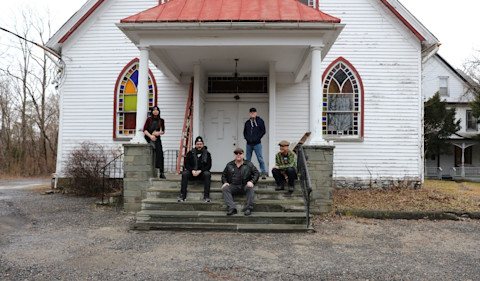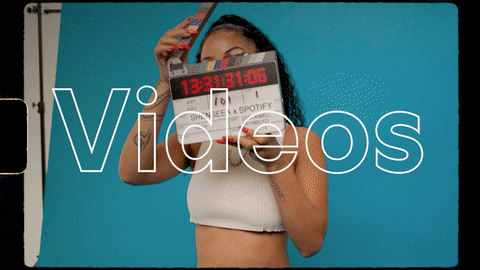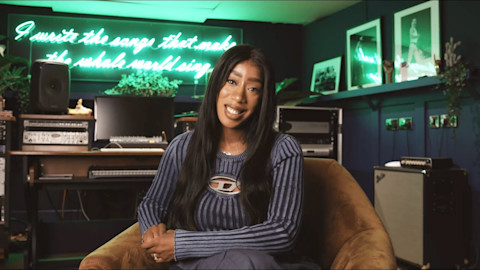The name Motown, all on its own, contains multitudes. The label has been home to more than a few legends, like Smokey Robinson, The Temptations, Marvin Gaye, Diana Ross & The Supremes… the list goes on and on. For many, the sounds of Motown stir up sweet memories of childhood—of moments swaying to the smooth strains of classic soul and discovering the power of a timeless song. Just look to Michelle Obama: “Every story needs a soundtrack, and Motown has provided so much rhythm to my life,” she wrote for her Becoming Motown playlist. The classic Motown sound has unquestionably made a massive imprint on music, culture, and society as a whole, but it often overshadows the iconic label’s continuing relevance.
This year, Motown Records, with president Ethiopia Habtemariam at the helm, is celebrating its 60th anniversary. Here, she shares the inspiring story of Motown Records and how it’s managed to capture the zeitgeist of any given decade since its humble days in Detroit, Michigan, operating out of a two-story house lovingly nicknamed Hitsville U.S.A.
The beginnings
Back in 1959, songwriter Berry Gordy had a dream, a vision, and an $800 loan from his family. He had worked on the assembly line at the Ford Motor plant in Detroit and imagined a record label running in a similar way. Songwriters, producers, and musicians would go from writing and making records straight into artist development, which would include learning dance moves, coordinating live performances, and even taking etiquette classes.
Gordy already had some success as a songwriter for Jackie Wilson and the Matadors, and was ready to strike out on his own. So he founded Tamla Records out of a small house in Detroit that held a studio, rehearsal hall, and offices where all the business, promo, and distribution of the records were handled. Soon after, he officially started Motown Records and had his first million-selling record with cowriter Smokey Robinson with The Miracles’ “Shop Around.” At that point, Gordy kicked everything into full gear.
![Motown President Ethiopia Habtemariam, Courtesy of Stephanie MeiLing]()
Motown President Ethiopia Habtemariam, Courtesy of Stephanie MeiLing
“Berry had a vision, and he had a fearless kind of mentality,” Habtemariam says. “At those times in the ’60s, the country was still separated by race. He was strategic in not wanting to allow radio to know that they were black artists, but to just get the songs played. But then he had bigger goals and dreams, like to make it on television, which had been unheard of when it came to black artists. What he was able to do then was really phenomenal. He became the bridge to bring people of all backgrounds and ages together.”
The music had become a significant representation of youth culture, but as Motown matured through the ’60s, so did its social impact and influence. With that came releases like Marvin Gaye’s game-changing 1971 album What’s Going On. “Mr. Gordy would talk about how he felt afraid before Marvin put that record out, because he didn’t want to cause controversy,” Habtemariam says. “But he had to take a position and not think in that assembly-line manner anymore. Instead, he took a role of being supportive of artists and their vision, if they’re clear on what they want to say and what they want to put out into the world.” From that point on, the talent kept coming—with artists such as Lionel Richie and the Commodores, Rick James, Teena Marie, DeBarge, and Boyz II Men—and so did the impactful music, like when Public Enemy released “Fight the Power” on Motown in 1989.
![Erykah Badu, Courtesy of Motown Records]()
Erykah Badu, Courtesy of Motown Records
The challenges
By the 21st century, Motown was still churning out successful talent and working with established stars like Brian McKnight and Erykah Badu, but it was also going through a bit of an identity crisis. After the label was absorbed into the Universal Music Group, it became known as Universal Motown. Habtemariam admits that the label was also struggling to uphold its own legacy while keeping up with the current culture.
“I don't think people really understood the magnitude and the potency of the brand Motown around the world,” she says. “Over the years people have kind of viewed Motown in a box. They sometimes just look at how they may have discovered Motown, whether they were a kid or an adult. But they don’t recognize how much of an effect Motown has had throughout every decade.” That includes The Supremes and The Jackson 5 in the ’60s, Marvin Gaye and Stevie Wonder in the ’70s, Lionel Richie and Teena Marie in the ’80s, and Boyz II Men and Badu in the ’90s.
Habtemariam says she also came into her role as president in 2014 still having to prove that Black music was relevant—decades after Motown first ruled the charts. But instead of looking back at the label’s golden age, she focused on the way people were currently consuming music. “Honestly, streaming and Spotify helped our industry understand that there was an interest and love for R&B and hip-hop around the world, and that literally changed everything—not only for Black music but for Motown specifically,” she says. “Streaming allowed us to reintroduce people to our history and catalog throughout every decade.” It’s also helped some of the label’s youngest artists, like 14-year-old Matt Ox and pop standout Njomza, thrive. Motown has always prided itself on being “The Sound of Young America,” after all.
![Njomza, Courtesy of Motown Records]()
Njomza, Courtesy of Motown Records
The future
Though the music industry has transformed drastically since Gordy started his empire over six decades ago, Habtemariam still thinks it’s possible for a label to make the same kind of widespread impact as Motown did in the ’60s—Motown itself, in its modern incarnation, has that potential. “If you can honor a legacy—not run away from it—but honor and respect it and tell its stories, it gives you a platform to move into the future,” she says. “Mr. Gordy is so proud of what's happening today because it's reflective of the people and the time and where youth culture is now,” she adds. Motown’s current roster highlights this future-thinking mindset, as they’ve embraced new sounds and styles, with artists like the “Three Kings of Hip-Hop” Migos, young rappers Lil Yachty and Lil Baby, and established vets including Ne-Yo and Kem.
Habtemariam continues to look up to Gordy’s work ethic, discipline, and resilience, while seeking to push the envelope in her own way. “I envision more artists, more hits, and figuring out new ways of telling their stories through different mediums around the world. That's the part that's exciting to me,” she says. “It’s a really, really great time in music. I think that we're all in a place of learning because everything's changing in real time. But that's the fun part. There are no rules in this anymore.”
—Stephanie Garr









